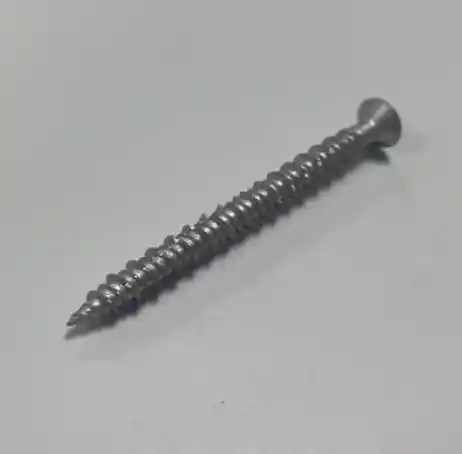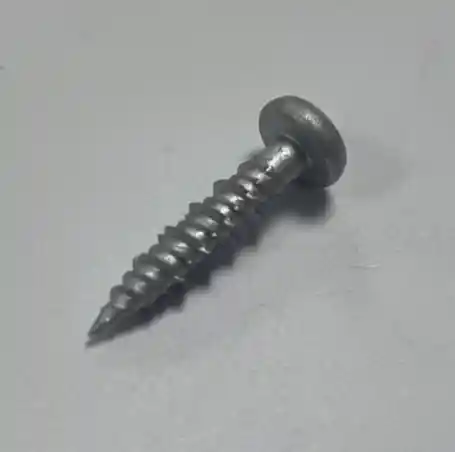caTEGORIES
Tags
Reusability Challenges and Strength Loss in Repeated Concrete Screw Holes

Posted: October 16, 2025
Categories: News
Ever tried pulling out a concrete screw just to pop it back in later? It seems straightforward, right? But in the world of fasteners, things aren’t always that simple. At Qewit Fasteners, we’ve seen our share of projects where folks push the limits on reusability. As a British-owned outfit based in Qingdao, China, since 2004, we supply top-notch fasteners to builders across Europe and beyond. Our screws, like the Phillips Pan Head with Washer Concrete Screws, are built tough with features that grip hard the first time around. Still, reusing them? That’s a topic worth digging into, especially if you’re dealing with masonry that fights back.
What Causes Strength Loss in Reused Concrete Screw Holes?
Pull a screw out, and the hole changes. It’s not rocket science, but it matters a lot in masonry work.
Hole Expansion from Friction
Friction’s the culprit here. When you drive in a concrete screw, like our Phillips CSK Head version with its hi-low thread, it cuts into the material. Pull it out, and that rubbing widens the hole a bit. Next time? The screw doesn’t bite as well. We’ve tested batches in our Qingdao lab, and even with our 3-notch design for extra grip, repeated friction adds up. Think about it—like wearing down a key in a lock over time.
Reduced Thread Engagement
Threads are key to holding power. Reuse means less contact between screw and wall. Our screws come in carbon steel or stainless, with Ruspert Grey finish to fight rust, but if the hole’s stretched, that thread engagement drops off. It’s frustrating, especially on jobs where you need reliability. I remember a client in the UK who tried reusing screws on a brick facade—ended up with wobbly fixtures. Not ideal.
Masonry Material Degradation
Masonry breaks down too. Concrete or brick crumbles under stress from insertions. Low-quality stuff degrades faster, but even solid blocks show wear. Our products aim to minimize this with precise threading, but reuse amplifies the issue. It’s why we stress quality control from the start—ISO 9001 certified factories help, but they can’t fix overuse.
How Does Concrete Type Impact Reusability?
Not all concrete’s created equal. The stuff you’re screwing into makes a big difference.
Low-Strength Concrete Permits Limited Reuse
Softer concrete gives a little more leeway. You might get a couple uses out of a hole before strength tanks. Our Phillips Pan Head Concrete Screws, with partial threading, work well here initially. But even then, it’s limited—maybe two or three times max, based on what we’ve seen in tests. Handy for temporary setups, sure.

High-Strength Concrete Restricts Reinstallations
Tougher concrete? Forget frequent reuse. It holds strong first go, but removal cracks or chips the edges. Reinsert, and grip’s gone. We supply to heavy-duty sites, and pros tell us high-strength mixes demand new holes every time. It’s a trade-off—better initial hold, but zero forgiveness on reuse.
Porous Masonry Accelerates Wear
Porous stuff, like some bricks or blocks, soaks up damage quick. Holes wear out faster from dust and debris. Our hi-low threads help cut through cleanly, but porosity speeds up strength loss. Ever worked with old masonry? It’s like that one project I heard about in Vietnam—screws held fine once, but reuse turned into a mess.
Why Avoid Reusing Qewit Concrete Screws?
We make great screws, but we’re upfront: reuse isn’t their strong suit.
Diminished Holding Values
Holding power plummets. Our lab data shows up to 50% drop after one removal—numbers vary by material, but it’s consistent. Why risk it when fresh screws from our Haiyan office stock deliver full strength?
Potential Screw Damage
Screws themselves bend or strip. Twisting them out can nick the threads or warp the head. Our stainless options resist corrosion, but mechanical damage? That’s on the user. Better to grab a new one from our bulk packs.
Increased Failure Risk
Failures happen more with reuse. Loose fixtures, pull-outs—it’s a safety thing. As a supplier to global clients, we push for best practices. Our British roots mean we prioritize reliability over shortcuts.
Oh, and speaking of shortcuts, I’ve got to mention how some folks mix fasteners from different suppliers. Bad idea—stick with one brand like ours for consistency.
What Features in Qewit Products Mitigate Issues?
Our screws aren’t just any fasteners. They’re designed to tackle these challenges head-on.
Hi-Low Thread Design
This design bites deep and holds firm. Alternating high and low threads reduce torque needs and improve grip in masonry. It’s a staple in our concrete screw line, making first installs a breeze.
Three Notches for Grip
Those three notches? They enhance cutting and reduce debris buildup. In our Phillips Pan Head with Washer model, they help maintain strength even in tricky spots. Clients rave about how they cut installation time.
Ruspert Grey Finish
Rust is the enemy. This finish fights it off, keeping screws viable longer in damp environments. While it doesn’t make reuse foolproof, it sure helps overall durability.
We offer customization too—if standard doesn’t fit, we tweak to drawings. It’s part of our “worry-free” service from production to your racks.
How Do Repeated Insertions Affect Performance?
Keep inserting and removing? Performance takes a hit, no doubt.
Gradual Grip Loss
Grip fades slowly at first, then fast. Each cycle loosens the bond. Our 3.1 certifications back up the initial strength, but reuse? Not so much.
Material Fatigue Accumulation
Fatigue builds in both screw and hole. Metal tires, masonry cracks. It’s cumulative—think marathon, not sprint.
Hole Integrity Compromise
Holes lose shape. What started clean becomes ragged. We’ve got optical sorting to ensure our screws are perfect out the gate, but compromised holes undo that.
Sometimes I wonder why more folks don’t just drill fresh—saves headaches in the long run.
What Best Practices Reduce Strength Loss?
Want to stretch reusability? Follow these, but remember, new is often best.
Precise Hole Drilling
Drill right size, right depth. Use our recommended bits—keeps holes tight. Sloppy drilling? Worse outcomes.
Regular Inspection Protocols
Check holes and screws before reuse. Look for cracks, debris. Our tech support can guide you
Compatible Tool Selection
Right tools matter. Phillips drive needs proper bits to avoid stripping. We test with our in-house facilities, like tensile strength testers.
FAQs
Q1: Can I reuse Qewit concrete screws multiple times?
Not recommended—strength drops sharply after removal, but in low-strength concrete, you might get limited use with careful checks.
Q2: What makes Qewit’s hi-low thread better for masonry?
It cuts cleaner and grips tighter on first install, reducing torque and debris compared to standard threads.
Q3: How do I know if a hole is too worn for reuse?
Look for expansion or cracks; if the screw spins loosely during test insertion, drill a new one to avoid failures.


